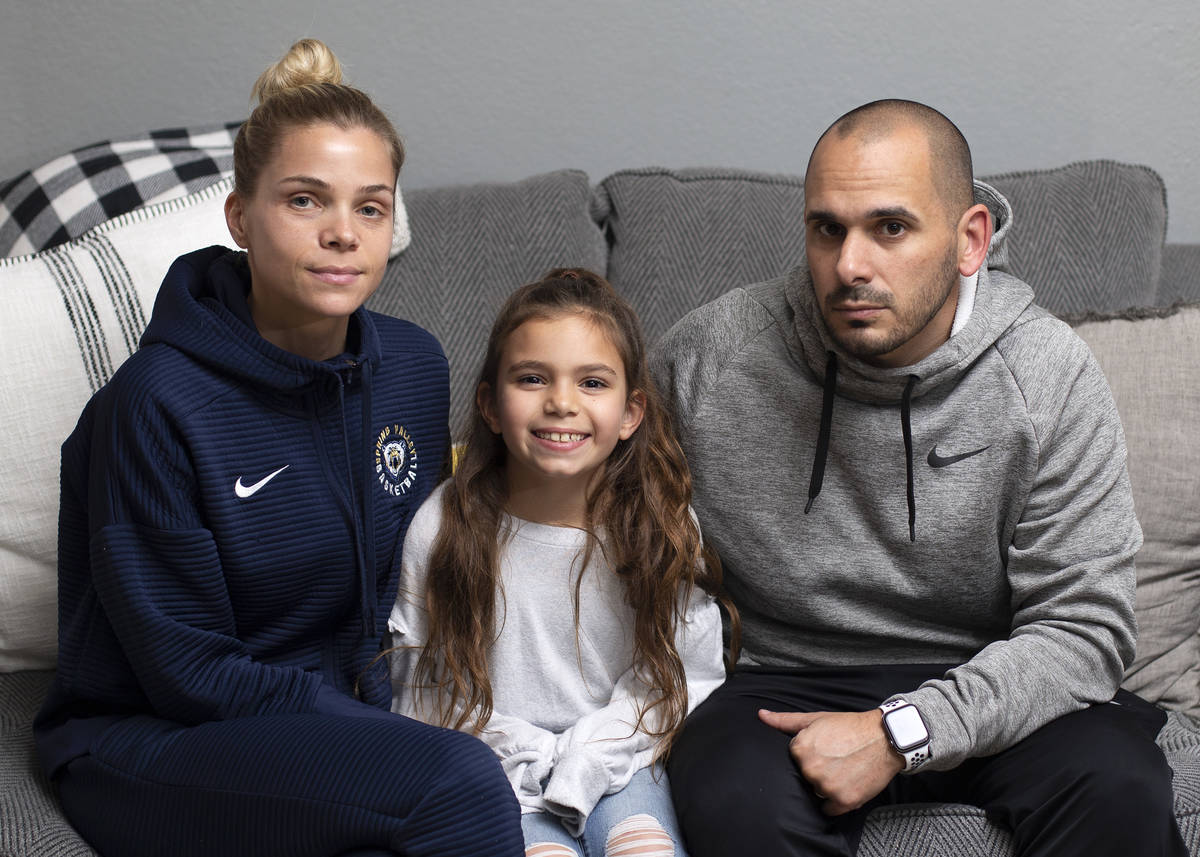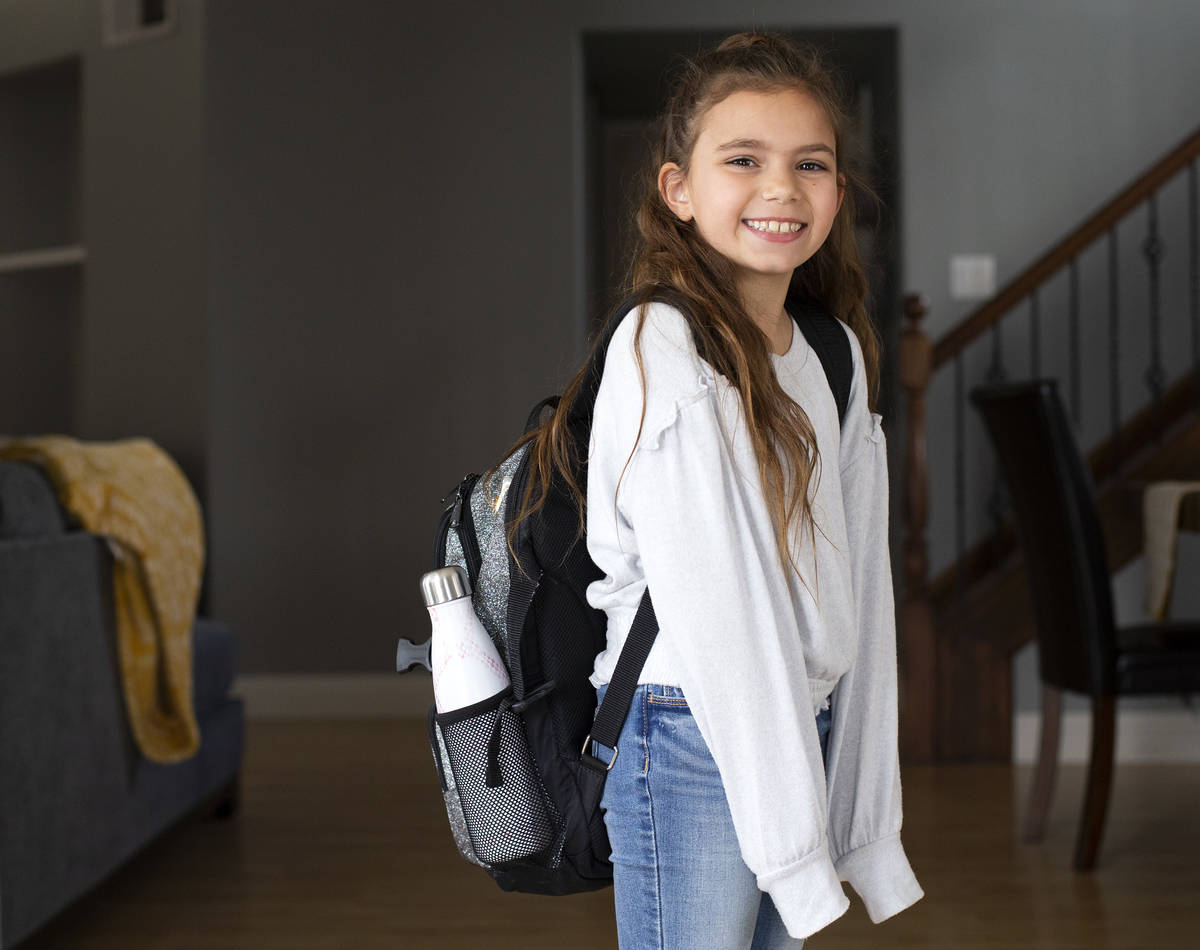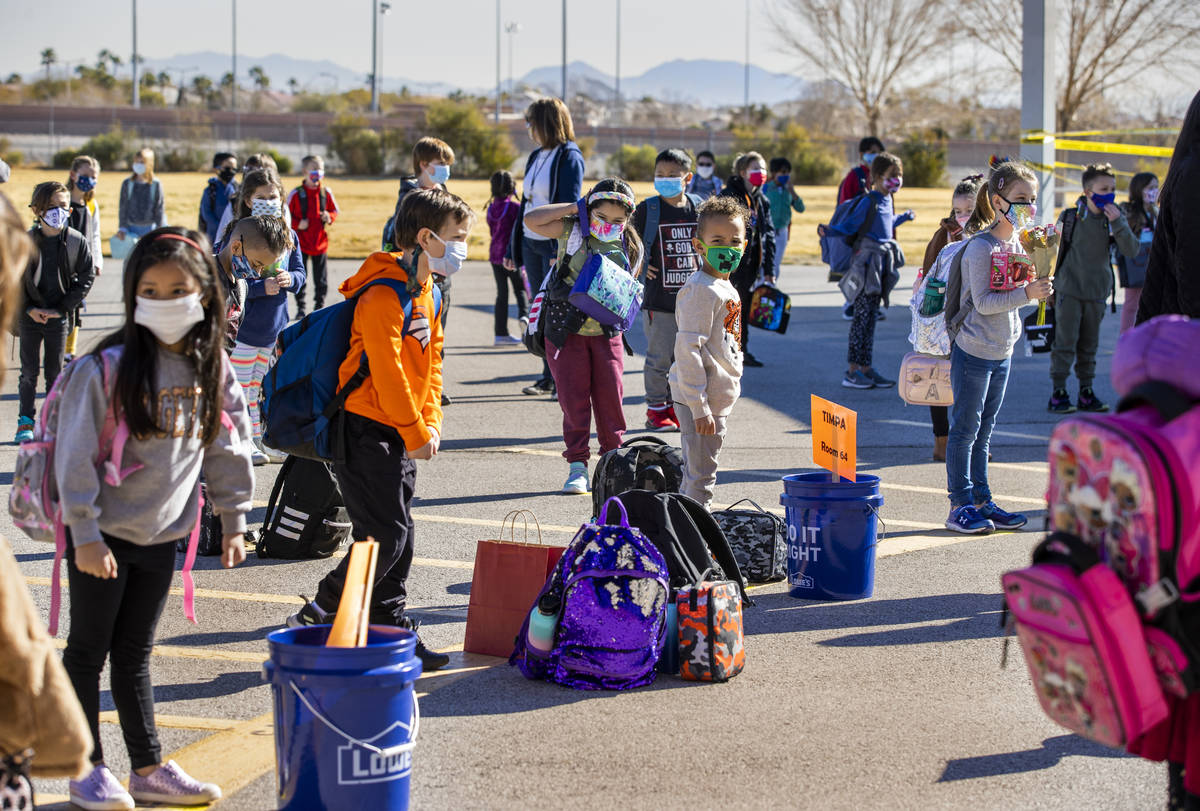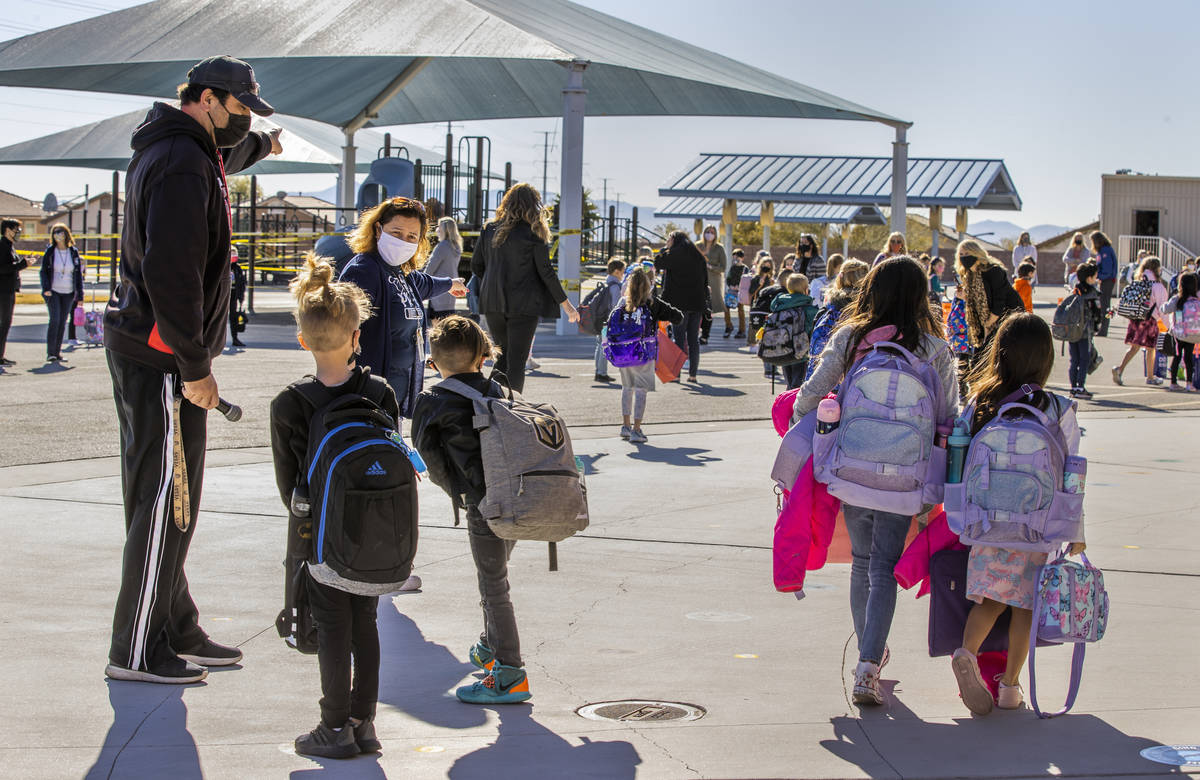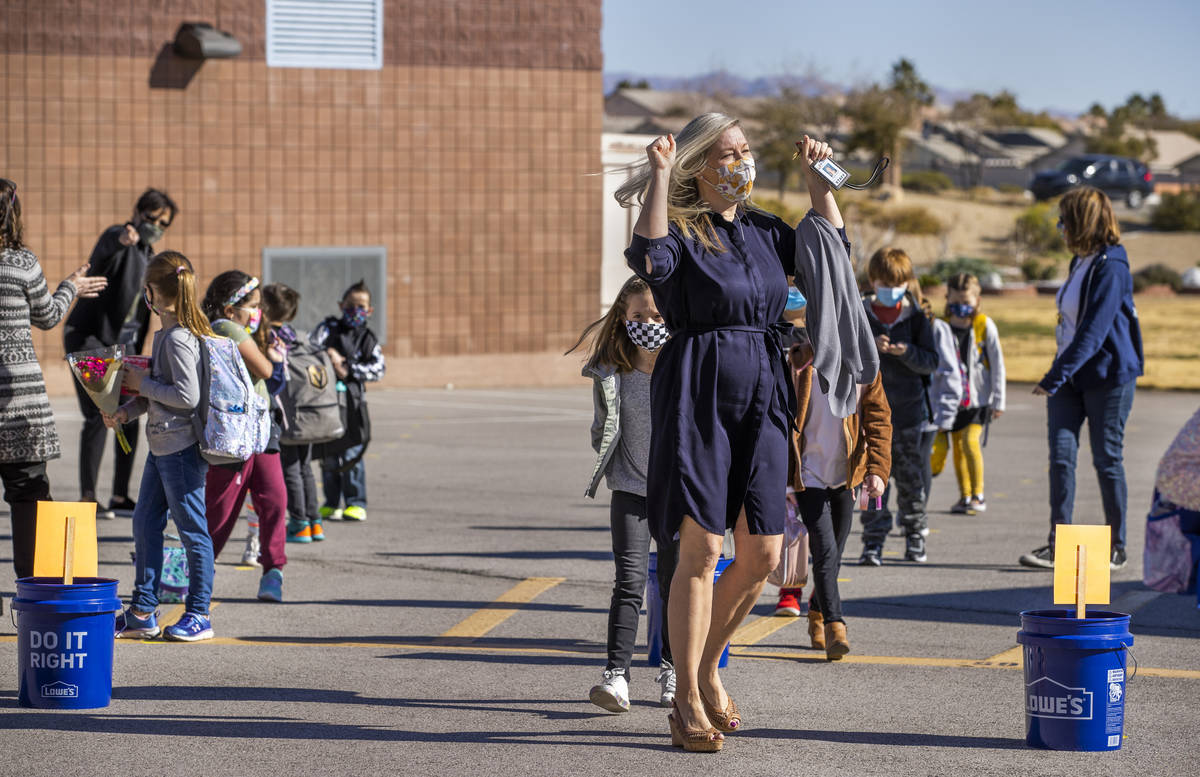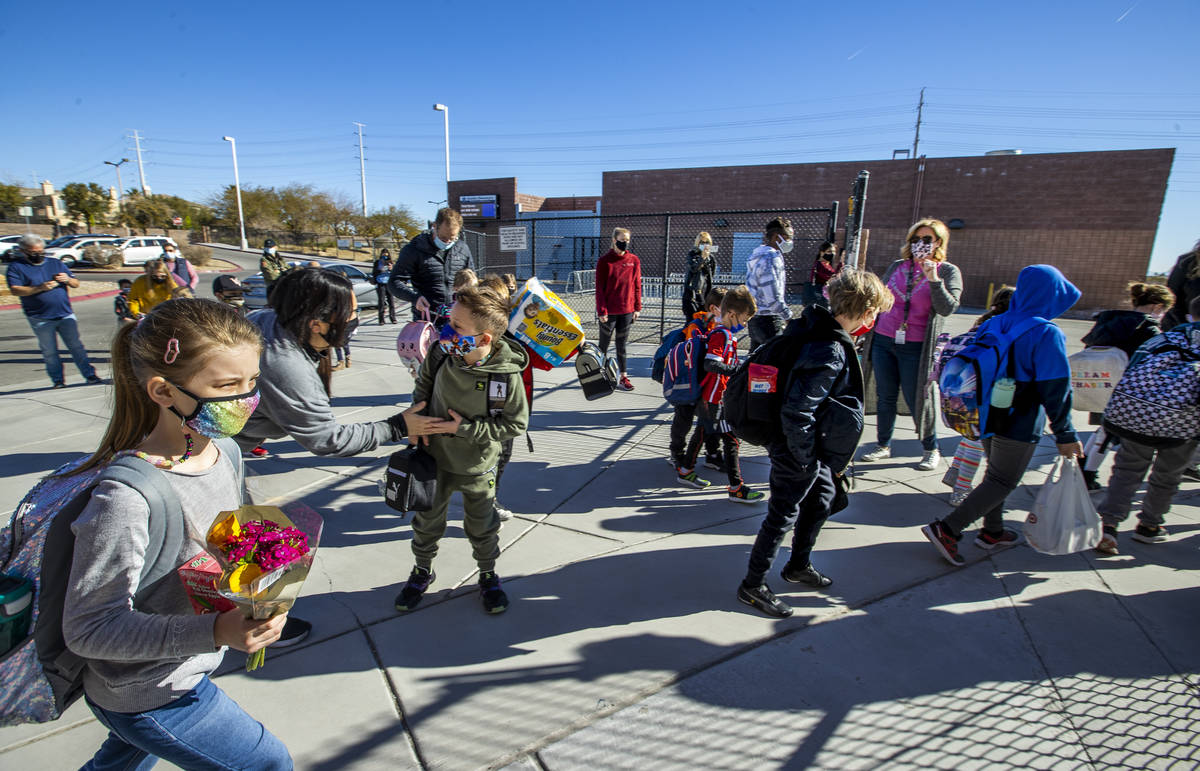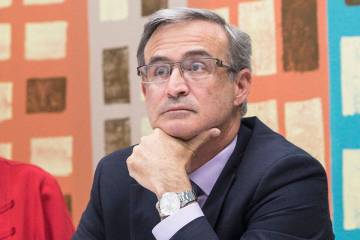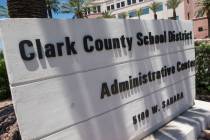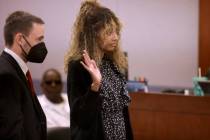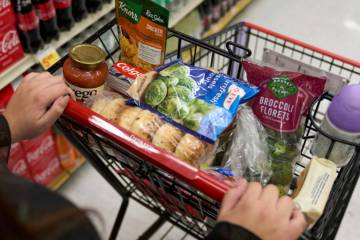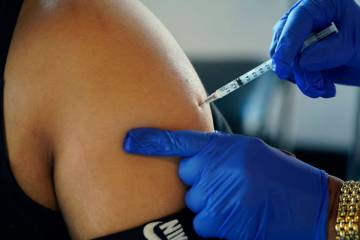Families grapple with choice of distance or hybrid learning
When Billy Hemberger’s daughter got home from her first day back in the classroom in nearly a year, he braced himself to hear that the experience was disappointing.
Instead, the 9-year-old wanted to be sure that her parents had signed her up to go back full-time when the option became available on April 6.
“She lit up. She loved it. It was the best day ever,” Hemberger said.
Hemberger’s dilemma is one that families throughout the Clark County School District are grappling with as more school buildings reopen over the coming weeks. Interviews with parents reveal that safety, learning quality, scheduling and their kids’ preferences all are top considerations in deciding whether distance or hybrid learning — two days a week in the classroom and two days of distance learning — is the best option for their kids.
Even more is riding on the decision for parents of early elementary students, who have had a hybrid learning option since March 1 but now need to choose between a full-time, five-day return to the classroom or remaining in distance learning through the end of the year.
Deadlines for the decision vary by school, and depend largely on capacity, with schools still held to health and safety considerations like maintaining 3 feet of distance between students. Those limits may mean that some students who want to return may have to stay home, or wait on a list until a spot becomes available.
Survey says
In surveys taken in January, early elementary families favored hybrid learning to distance learning by 56 percent to 44 percent. But preferences at individual schools varied widely, with 80 percent preferring distance learning to 20 percent in favor of hybrid learning at some.
Of the 92,000 preschool to third-grade students at the district, around 56 percent remained in all virtual instruction, while 44 percent returned to schools two days a week under the hybrid education model. Any families who didn’t state a preference remained in distance learning.
Hemberger said the decision to send their daughter back to school was a difficult one for him and his wife, both of whom are CCSD teachers. While they believed she needed to be in school, they knew there were going to be trade-offs, including their daughter having a new teacher nearly seven months into the school year.
But the third grader took it in stride, he said, and the staff at Bonner Elementary deserved credit for a smooth and structured process. Mornings start with live teaching followed by individual work time, which gives students a chance to ask questions — something that was difficult to facilitate at home when both he and his wife were teaching their own classes.
Another boon for an only child is recess, Hemberger said, where his daughter can go outside and see other kids, even if they can’t get close.
“It felt normal. That’s the best way to put it,” Hemberger said.
Sara George said her kindergartner did well at the beginning of the virtual school year despite not yet knowing how to use a mouse or a keyboard. But after two weeks off for winter break, she seemed to hit a wall and no longer wanted to log on or participate much when she was online.
“Every 10 minutes I’d look over at her and see that she was looking out the window,” George recalled.
When the hybrid option was announced, George said the family walked through the potential risks: Their daughter is young, and they have no high-risk family members living in the home. The school’s safety measures seemed sufficient, its campus is relatively new and teachers had an opportunity to get vaccinated before classes resumed.
When she asked her daughter whether she would like to go back, the answer was clear.
“She jumped at the chance,” George said. “There has been a marked improvement in her mood and her enthusiasm for school since she went back last week.”
Going in-person meant switching teachers, but George said her daughter has handled it well. But another switch is possible when elementary students return to schools full-time.
Looking further out, George said she hopes the next school year is as close to normal as possible.
Distance learning opinions vary
A survey of parents statewide by the University of Nevada, Reno, found wide variability in families’ qualitative experiences with distance learning — not just from one household to another but between siblings, too, said Shannon Horrillo, associate director of UNR Extension.
The choices families will make for the rest of the semester and the following year probably will be rooted in this experience, Horrillo noted, and influenced by factors like having the time and resources to facilitate learning at home.
“It’s a function of how safe they think the kids are at school and what they’re seeing at home regarding the quality of education and their socio-emotional health, and do they think it’ll be better if they sent them to school?” she said.
But despite the differences in experience, Horrillo said the data showed respondents had similar priorities: Asked to rank the importance of 38 different factors from the quality of distance education to the safety of students in school, both families and school personnel identified communication between school and home as most important.
While satisfaction with distance learning was low — just 36 percent of respondents said the school year was “good” or “very good” — parents who were more engaged were more satisfied with distance education overall, Horrillo said.
Parents who are choosing to keep their kids at home full-time told the Review-Journal that safety and the limited amount of time left for in-person instruction this school year were key factors.
Another common sentiment was that their students had done as well or even better academically online than in past in-person years.
William Fouts said his sixth-grade daughter — a typically A or B student — had earned straight As this year, never missing a session on Google Meets. Given the choice, she was certain she wanted to stay virtual, Fouts said.
His 12th grader, a lifelong high-achiever, just wanted to make sure she would be allowed to participate in in-person theater if she remained online, Fouts said, adding that she may have decided to return in person if there had been more time left.
“I kind of sat down with them and left it up to them, which I maybe wouldn’t have done if they weren’t doing well,” Fouts said. “We were told that if you choose Cohort C, you probably can’t change your mind. So I wanted to make sure they were pretty confident.”
Fouts said that as a district biology teacher, he had concerns about the virus but was ultimately happy to go back once teachers were able to get vaccinated. And he wouldn’t want his daughters to do another year of distance learning, even if it was available.
“I’m just hoping they’ll be back much closer to normal,” Fouts said.
Jill Hohman said that her seventh-grade daughter didn’t like some aspects of distance learning but also didn’t see the point in returning for just a few weeks.
‘Half days really hard’
The schedule for secondary schools sees most students attend classes on campus in the mornings before going home in the afternoon for more virtual sessions — which Hohman described as unrealistic for working families
“She is a magnet student, and the bus is late, a lot. Which makes the half days really hard, and (there’s a) risk of her missing virtual class time too,” Hohman said.
“Also, I was a teacher until last year. I know that there are many other students that do not have the access and/or home setup we can provide for her,” she said. “They need that classroom spot more than her.”
Jo Beth Dittrich said the most important factor in her decision to keep her son home was safety, as she has lost both a friend and a family member to the virus. Her choice was affirmed, she said, when she learned that a student who had returned to her son’s third-grade class had tested positive for COVID-19.
Second to safety was the fact that her son seemed to be flourishing under distance learning, developing a focus and independence that she hadn’t expected until he was older, Dittrich said.
“He’s competitive and wants to do well in front of his peers,” she said. “I peek at his screen and he’s actively engaged.”
Though her son might like to go back, Dittrich said she’s tried to structure lots of outdoor activities with safe social distancing to keep him active. To feel comfortable about sending him back, Dittrich said she’d want to see mandatory vaccinations for kids, with the exception of those with medical exemptions.
Far from being a loss, online learning has imparted tangible life skills for students, Dittrich said — and the expansion of learning options at the district is ultimately a good thing, she added.
“There are competent teachers who are able to do this and offer this as an option for scaredy-cat parents like myself,” Dittrich said. “It’s not the throwaway that everyone is trying to make it out to be.”
Contact Aleksandra Appleton at 702-383-0218 or aappleton @reviewjournal.com. Follow @aleksappleton on Twitter.
Returning to class
Thousands of sixth, ninth and 12th graders at the Clark County School District are signed up to return to their physical classrooms on Monday after a year of virtual learning, but the majority of students in those grades have opted to continue in virtual learning.
According to the district, 26,764 students in grades 6, 9 and 12 have opted for one of the two in-person cohorts, while another 44,912 have opted to stay in distance learning.
The district expects these numbers to fluctuate as schools accommodate transfer requests during the first week of reopening.
The next wave of reopening on April 6 will see students in all other secondary grades return under the hybrid model, while elementary students have a chance to attend full-time, five days a week.



